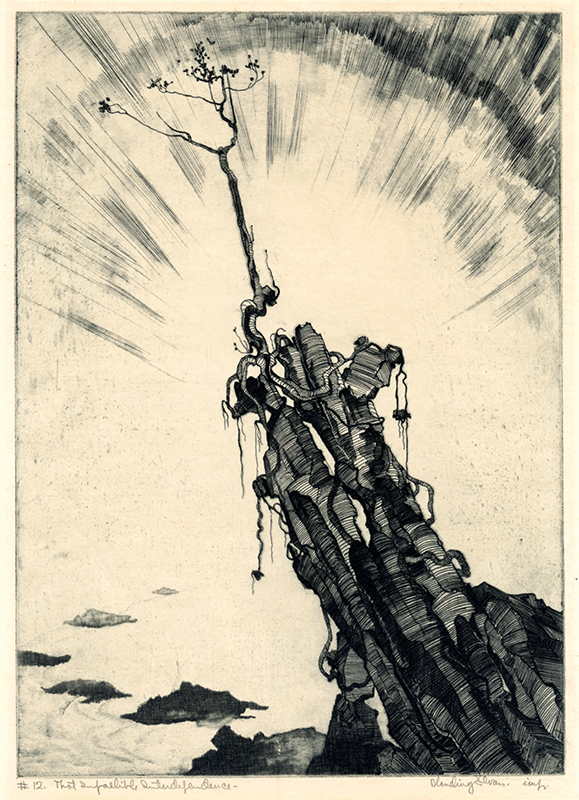
19th, 20th & 21st Century Fine Prints
707-546-7352 · fax 707-546-7924 · web: www.annexgalleries.com · email: artannex@aol.com
That Infallible Interdependence by James Blanding Sloan

That Infallible Interdependence
James Blanding Sloan
That Infallible Interdependence
James Blanding Sloan
1886 - 1975 (biography)The decayed and splitting stump of a long-since toppled tree is now host to a new plant, whose root system entwines itself around its obliging anchor in a representation of new life as they balance on a cliff edge. James Blanding Sloan's etching of what could so easily be a scene of no special significance becomes a visual allegory of the perseverance of nature, life, and even the recognition within ourselves of the interconnectedness of everything.
Sloan's work volleyed between the surreal and the representational, and his style varied as he learned new techniques and mediums. The composition of "That Infallible Interdependence" teeters between both, using what appears to be the rays of the sun to lend a celestial halo to the triumphant resurgence of life - a symbol of hope, or of possibility.
James Blanding Sloan was born in Texas on September 18, 1886, and grew up in Corsicana, Texas, where he received his early education and began acting in local theater. In 1910 he enrolled at the Chicago Academy of Fine Arts (now the School of the Art Institute of Chicago). He would later become a teacher of color composition there. He shared a studio with printmaker B.J.O. Nordfeldt and discovered color etching through George Senseney. In 1914 he participated in his first exhibition with the Chicago Society of Etchers.
In 1923 Sloan left New York with Mildred Taylor, his second wife, intending to drive across the U.S. and embark on a trip to Asia. However, due to Sloan's ailing health, when they arrived in San Francisco they opted to remain and established a studio on Polk Street. This proved to be a prolific time for the artist, whose work greatly reflected his interest in questioning the establishment. In addition to fine art on paper and canvas--gaining such a positive reaction that catalogue raisonné of his work was published in 1926--Sloan continued with his theatrical pursuits, establishing a puppet theater for adults that featured critical commentary on religion, sex, and politics, and opening a movie theater that ran foreign films banned elsewhere.
James Blanding Sloan died on October 5, 1975, in Canyon, Alameda County CA.
